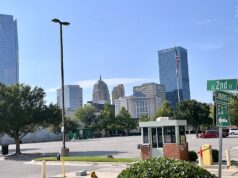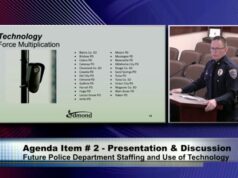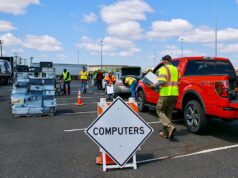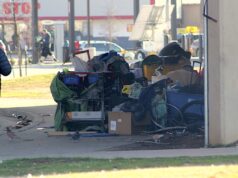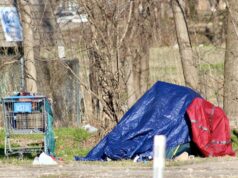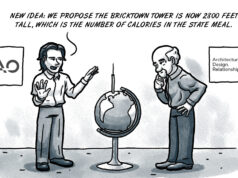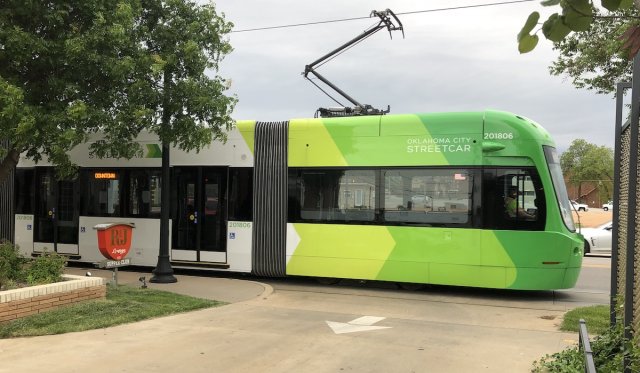

Downtown Oklahoma City has been mostly quiet amid the novel coronavirus pandemic, with many businesses having been shuttered for two months to prevent spread of COVID-19. That inactivity has had a dramatic impact on the ridership of the city’s $135 million streetcar system launched in 2018.
In March, 13,039 people rode the streetcar, according to data provided by EMBARK, the city’s public transit authority. Over the same period in 2019, more than 33,000 riders hopped aboard.
April was even quieter, with just 4,373 riders in the course of the month, with an average of just 146 people per day. Last April, 29,660 folks rode the streetcar.
Streetcar systems in other cities have also seen plummeting ridership numbers. Kansas City’s system, which is often compared to Oklahoma City’s because of its size and its style of streetcar, saw its numbers drop by half in March and April.
The system has been controversial from its outset, and the sight of empty cars rolling through the streets during a pandemic doesn’t help. But officials who support the system say the continued service is needed and that the system as a whole points to a bright future for the city.
Why the streetcar still runs
Even with downtown largely closed, the streetcar has continued to run from Bricktown to Midtown on a combination of loops. Often, that means the cars are empty as they traverse the city’s 5.6 miles of track.
That might seem unnecessary or wasteful, but city officials say there are reasons to keep the streetcar on schedule regardless of ridership.
Herzog Transit Services operates the service under a contract with the city. That contract doesn’t offer cost savings for the city to shut down the service, Oklahoma City Mayor David Holt said.
“In our form of government, the mayor does not have unilateral operational authority,” Holt said in an email to NonDoc. “But to the extent I have an opinion as one of many who are a part of these conversations, my chief interest was whether the low ridership during the pandemic justified shutting the streetcar down to save financial resources. However, I was told that we would be liable for paying our contract to the operator in any case, and therefore there were no cost savings to be had. As such, there was no practical reason to cease operations.”
EMBARK public information officer Michael Scroggins emphasized the importance of consistency in public transportation systems.
“If you put a schedule out there, regardless of the mode of transportation involved, you have to make sure it’s there, because people come to rely on it,” he said.
Beyond that, technical reasons exist to keep the cars running.
“There are some issues that could arise if we don’t run it, regarding maintenance on the tracks,” Scroggins said. “Running it helps to keep up with what condition they are in and allows us to help maintain them.”
Scroggins said shutting the system down would also lead to problems when it is needed again.
“There’s a significant cost associated with training operators and to restarting the system once it has been shut down for an extended period of time,” he said.
Some services have been cut, however. Weekend service ends at 7 p.m. instead of 3 a.m. One car has been pulled from weekday service, he said.
‘It exists as much for the city we are still building’
Scroggins said much of what the streetcar system is intended to serve either hasn’t been built yet or is still under construction. Those facilities include the new convention center, slated to open later this year, and a 600-room Omni Hotel set to open in early 2021.
Holt continues to be bullish on the OKC streetcar system, noting it had 500,000 riders in the first 14 months it was open prior to the pandemic.
“I have always felt it exists as much for the city we are still building as much as it is for the city we have,” Holt said. “Certainly when the convention center and Omni are open and the pandemic is over, the streetcar will be even more useful to our long-term growth downtown. It has already inspired investments like Heartland that will continue to bring riders in the post-pandemic world.”









